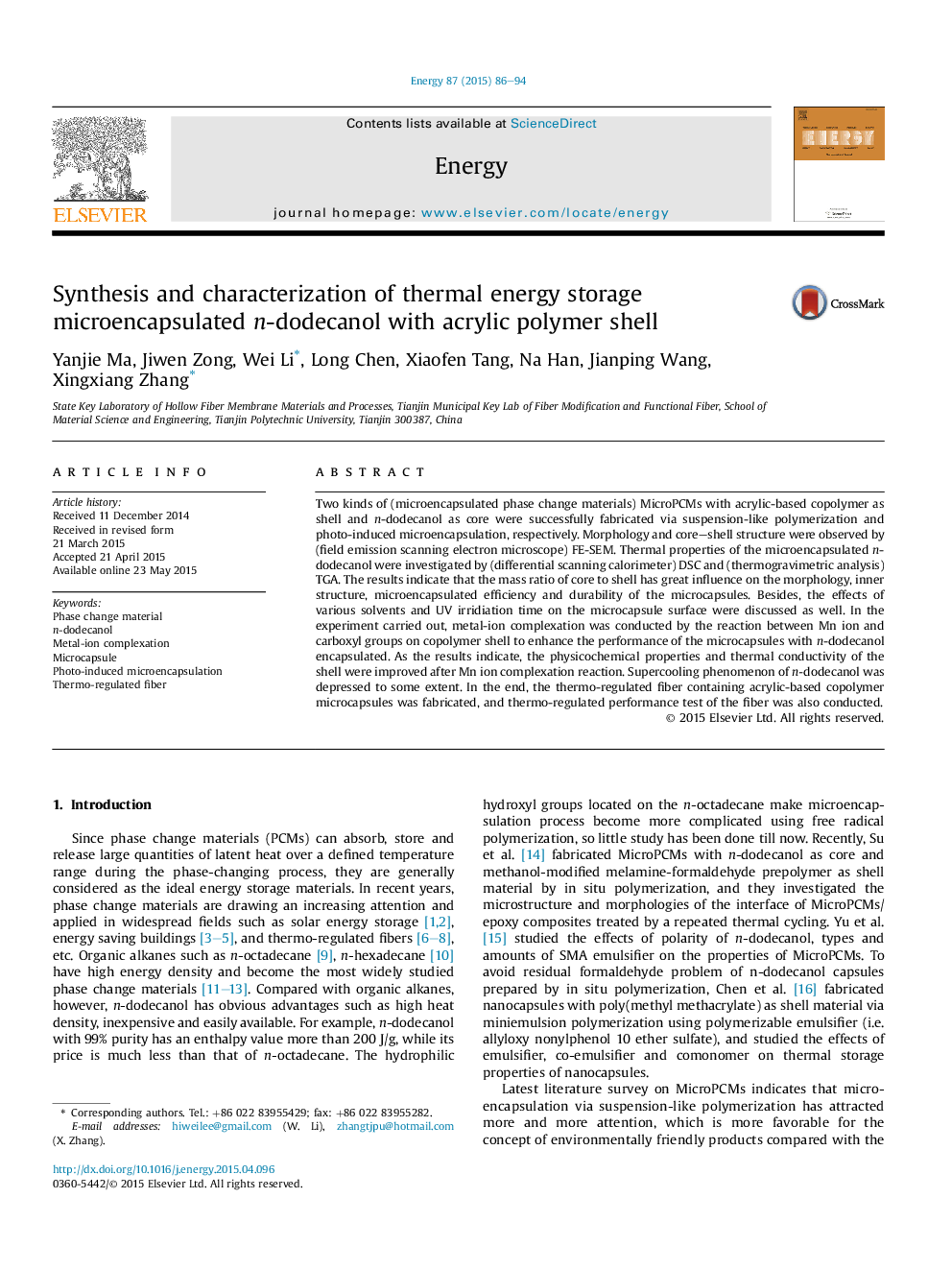| Article ID | Journal | Published Year | Pages | File Type |
|---|---|---|---|---|
| 1731818 | Energy | 2015 | 9 Pages |
•Microencapsulated n-dodecanol with acrylic polymer shell.•Microencapsulated n-dodecanol was fabricated by photo-induced microencapsulation.•Acrylic-based copolymer microcapsules with manganese-ion complexation.
Two kinds of (microencapsulated phase change materials) MicroPCMs with acrylic-based copolymer as shell and n-dodecanol as core were successfully fabricated via suspension-like polymerization and photo-induced microencapsulation, respectively. Morphology and core–shell structure were observed by (field emission scanning electron microscope) FE-SEM. Thermal properties of the microencapsulated n-dodecanol were investigated by (differential scanning calorimeter) DSC and (thermogravimetric analysis) TGA. The results indicate that the mass ratio of core to shell has great influence on the morphology, inner structure, microencapsulated efficiency and durability of the microcapsules. Besides, the effects of various solvents and UV irridiation time on the microcapsule surface were discussed as well. In the experiment carried out, metal-ion complexation was conducted by the reaction between Mn ion and carboxyl groups on copolymer shell to enhance the performance of the microcapsules with n-dodecanol encapsulated. As the results indicate, the physicochemical properties and thermal conductivity of the shell were improved after Mn ion complexation reaction. Supercooling phenomenon of n-dodecanol was depressed to some extent. In the end, the thermo-regulated fiber containing acrylic-based copolymer microcapsules was fabricated, and thermo-regulated performance test of the fiber was also conducted.
Graphical abstract(a)∼(d) schematic diagram of microencapsulation and (e) microcapsule with core–shell structure.Figure optionsDownload full-size imageDownload as PowerPoint slide
